

William Stopford
The cars axed in 2025 that we'll miss the most
15 Hours Ago
The Hyundai Santa Fe stands out in its segment, from its bold styling to the availability of diesel power – a rarity in a large, car-based crossover from a mainstream brand.
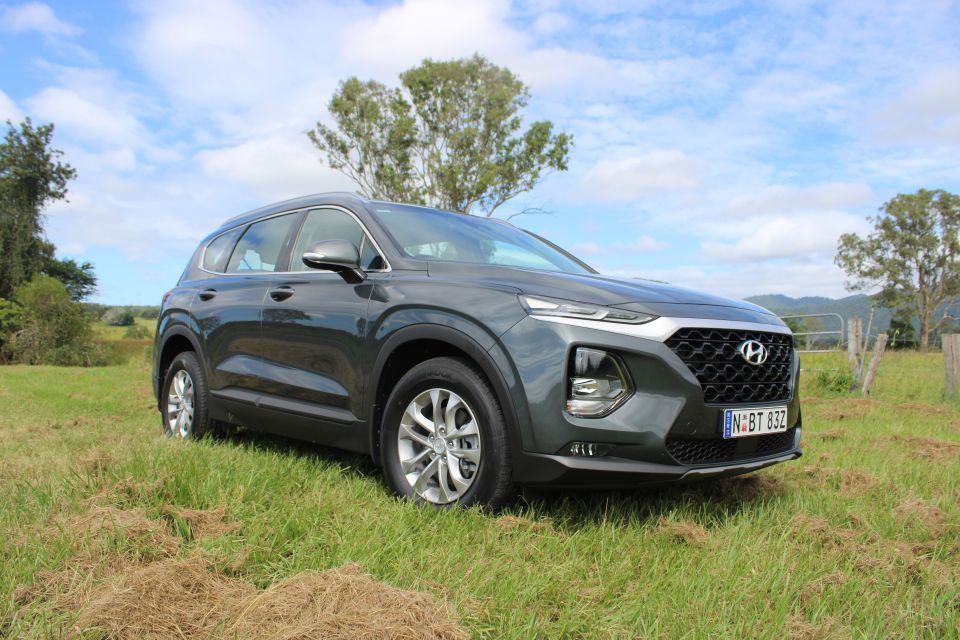
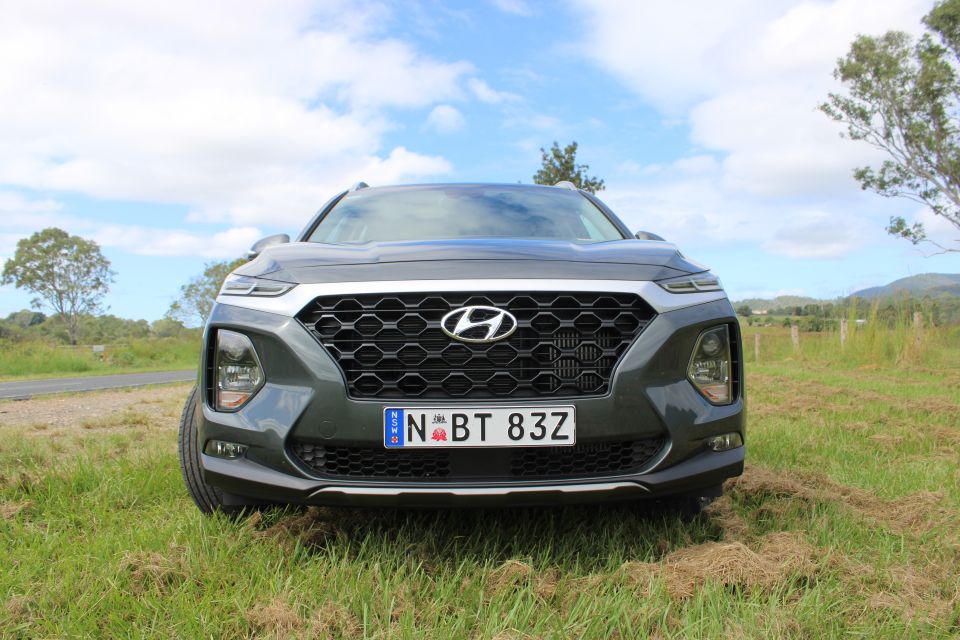

News Editor
New from
$46,000
excl. on-roads

News Editor
New from
$46,000
excl. on-roads


News Editor
New from
$46,000
excl. on-roads

News Editor
New from
$46,000
excl. on-roads
Quickly see how this car stacks up against its competition. Select any benchmark to see more details.
Where expert car reviews meet expert car buying – CarExpert gives you trusted advice, personalised service and real savings on your next new car.
In the early 20th century, the municipal government of Santa Fe, New Mexico decided to embrace a new, more unified look for the city’s architecture.
The aim was to make the city stand out and appeal to tourists, and the Pueblo Revival architecture gave the city a look like no other in the country
Likewise, Hyundai gave its large Santa Fe SUV a bold new look for 2018. The old model was a handsome thing but looked a tad like rival SUVs, much as Santa Fe’s architecture had evolved to look like other cities’.
Like the flat-roofed, stuccoed buildings of Santa Fe, the Hyundai’s new look isn’t for everyone.

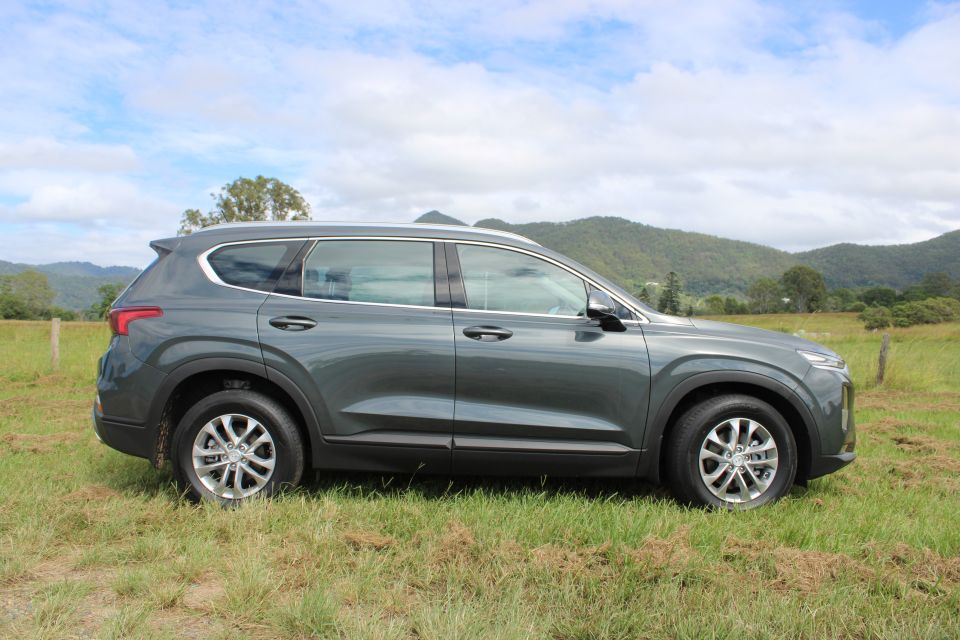
The most polarising part of the Hyundai is its split-level lighting up front, the Hyundai Santa Fe’s daytime running lights divided from the headlights and integrated with a gaping, anvil-shaped grille. The Santa Fe’s sides are more bluff and less sculpted than that of its predecessor.
Like its cousin, the almost identically-priced Kia Sorento, the Santa Fe occupies a somewhat unique spot in the market.
Most of its rivals, like the Mazda CX-9, Nissan Pathfinder and Toyota Kluger, have been developed with the American market in mind and therefore don’t offer diesel engines.
The Santa Fe does, although it can only be had with all-wheel drive. Likewise, if you’re happy with just front-wheel drive, it can only be had with a petrol engine.
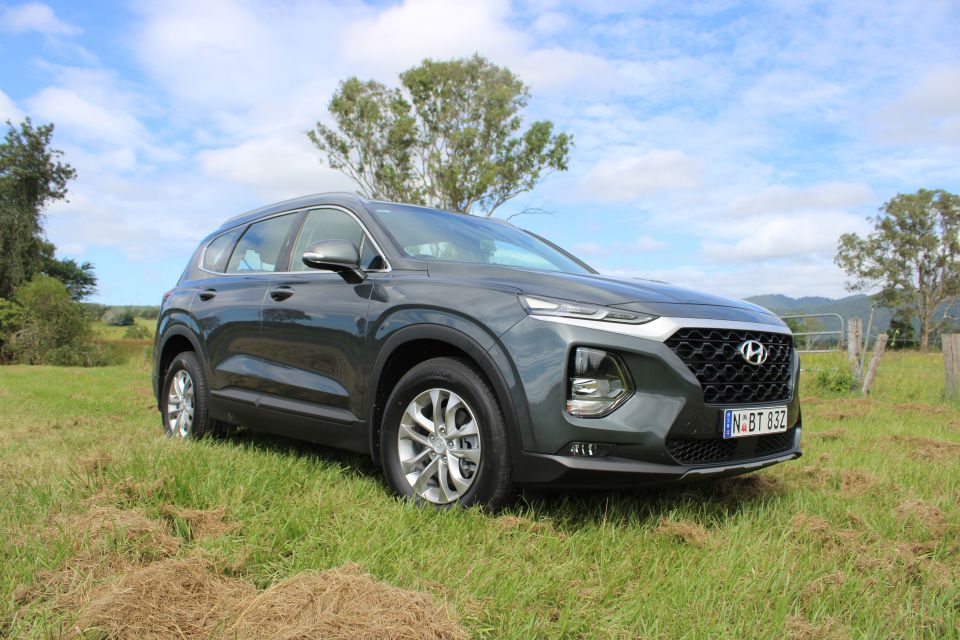
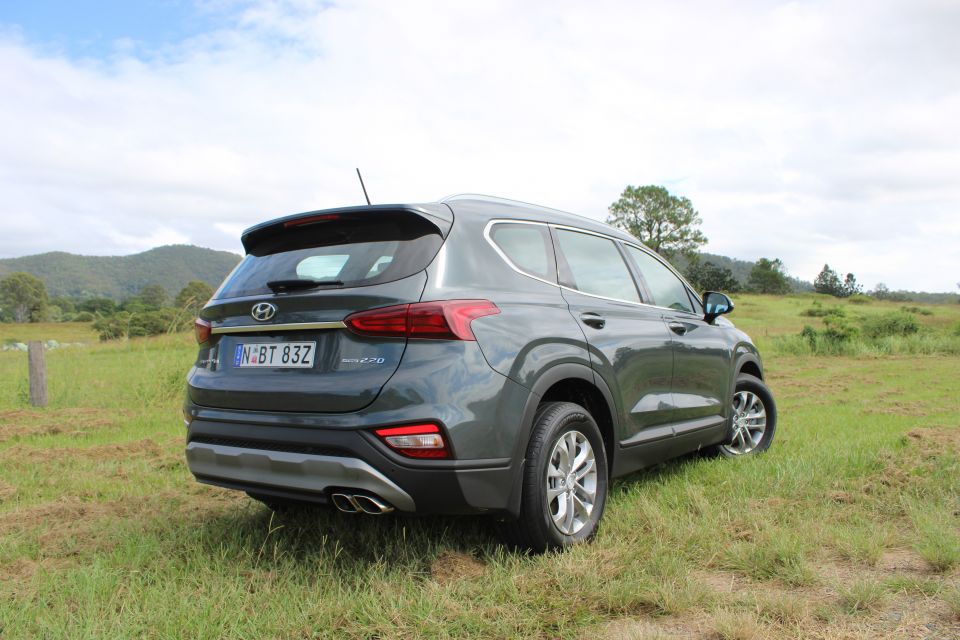
No matter which powertrain you choose, there are three trim levels available.
Our tester, the base Santa Fe Active, undercuts the cheapest model in the diesel-only Ford Endura range and has two extra seats, while the Skoda Kodiaq is also more expensive and doesn’t offer a diesel except in $70k-plus RS trim.
Ute-based four-wheel drives like the Toyota Fortuner and Mitsubishi Pajero Sport offer diesel power but feel less car-like to drive.
That just leaves the Sorento, of which a new generation will land later this year.
The 2020 Santa Fe range opens with the Active V6 at $43,000 before on-road costs.
The diesel all-wheel drive adds $3000 to the price tag, for a total of $46,000 before on-road costs. That’s still $5000 less than the next rung up, the Elite V6.
The Hyundai Santa Fe has a muted colour palette. That includes the Rainforest Green of our Active tester, which was subtle yet attractive.
A deeper, richer green would look fantastic on the Santa Fe but this greenish grey – or greyish green – is a good choice. It’s nice to see some more green options out there.
It’s a $695 option, as is any other colour besides White Cream. That includes the three different silver/grey shades.
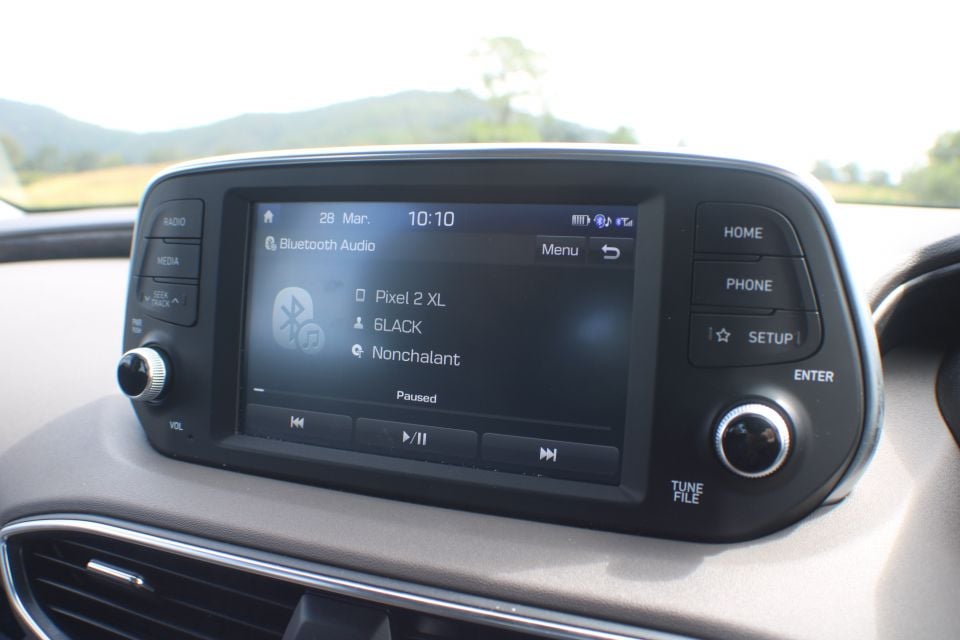
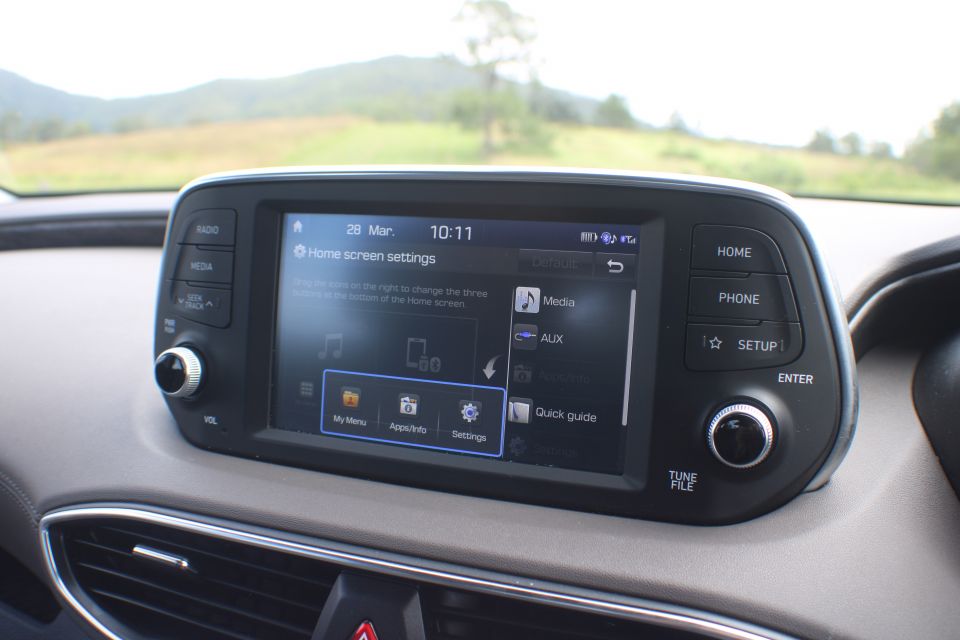

Buy your new car without the stress. It's fast, simple and completely free.

Great service from Travis and team, second time I have used this business would not hesitate to recommend them to anyone
Craig C.
Purchased a Ford Ranger in Sunshine Coast, QLD
CarExpert helped Craig save thousands on his Ford Ranger, now let us save you on your next new car.
Find a dealThe Hyundai Santa Fe Active comes standard with a six-speaker sound system, leather-wrapped steering wheel and shifter, electronic parking brake, and adaptive cruise control.
There’s also a 7.0-inch touchscreen infotainment system with Android Auto and Apple CarPlay.
Elite and Highlander models have a larger, 8.0-inch screen with satellite navigation.
Exterior lighting comprises halogen headlights, tail lights and fog lights but LED daytime running lights.
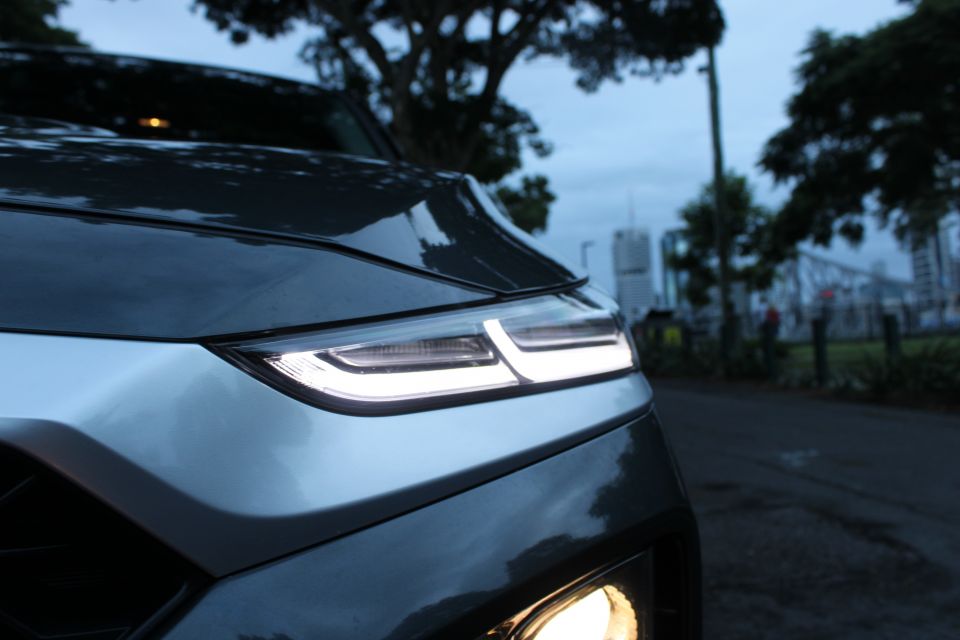
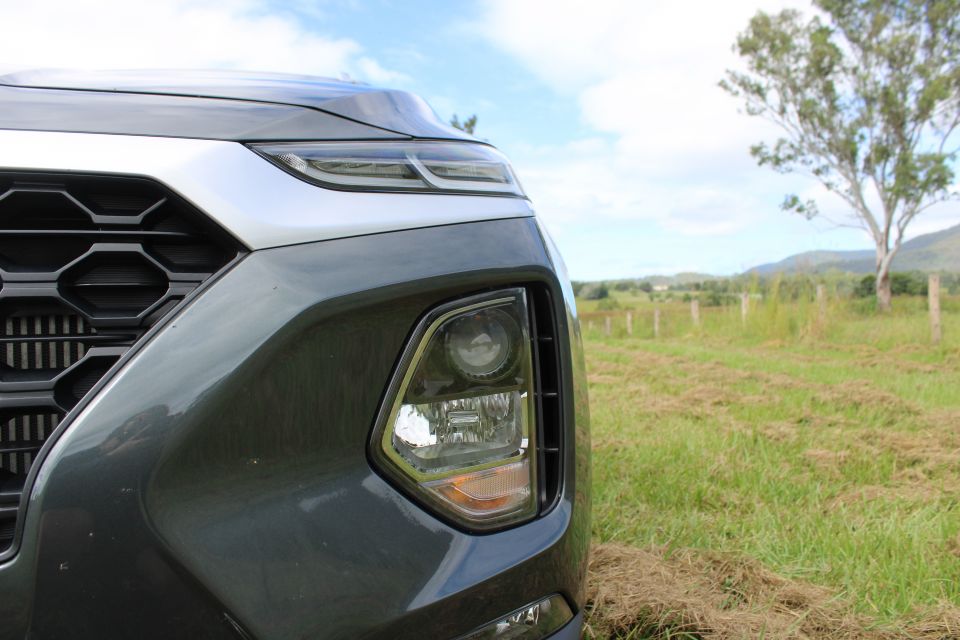
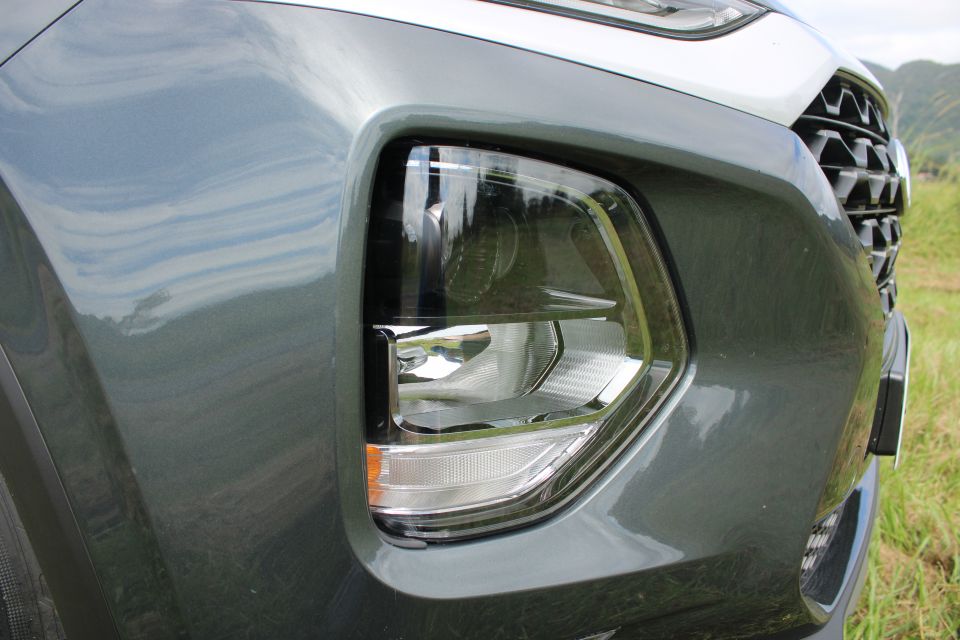
Smaller screen aside, the manual air-conditioning is perhaps the most obvious reminder you’ve bought the base model. There’s a bit of a blank spot where the extra controls of the dual-zone climate control system would be, though it’s not as obvious as some cars’ button blanks.
You also won’t find DAB+ digital radio, power front seats, proximity entry, push-button start, a power tailgate, or front parking sensors. If those features are important to you, you’ll need to step up to the Elite.
Where Hyundai hasn’t skimped is in the Santa Fe’s list of safety features. All Santa Fe models come standard with Hyundai’s SmartSense safety suite. This includes blind-spot monitoring, rear cross-traffic alert and lane-keeping assist.
The Santa Fe’s autonomous emergency braking and forward-collision warning system employs a camera and radar and works at both city and highway speeds. It also features pedestrian and cyclist detection.
There are front, side and curtain airbags for the first row, as well as curtain airbags for the second row. There are no curtain airbags for the third row, but the second-row ‘bags extend a long way back, as ANCAP’s crash video shows.
There are a handful of safety features available elsewhere in the Santa Fe range but not on the Active.
These include a 360-degree camera, a rear occupant alert that warns you if you’ve left a child in your car after locking it, and Safe Exit Assist that uses radar to stop passengers from exiting into the path of an oncoming vehicle.
When the Hyundai Santa Fe was tested by ANCAP in 2018, it received a rating of five stars.
The Santa Fe is graced with an attractive interior that has a fetching dual cowl-style dashboard.
It has a two-tiered design (and two-tone in other Santa Fes), and there’s a sweeping arc that starts on the two front doors and curves gracefully into the dashboard.
Incidentally, this curvature would be the perfect spot for a thin strip of ambient lighting. It’s been done before and would have a real wow factor.
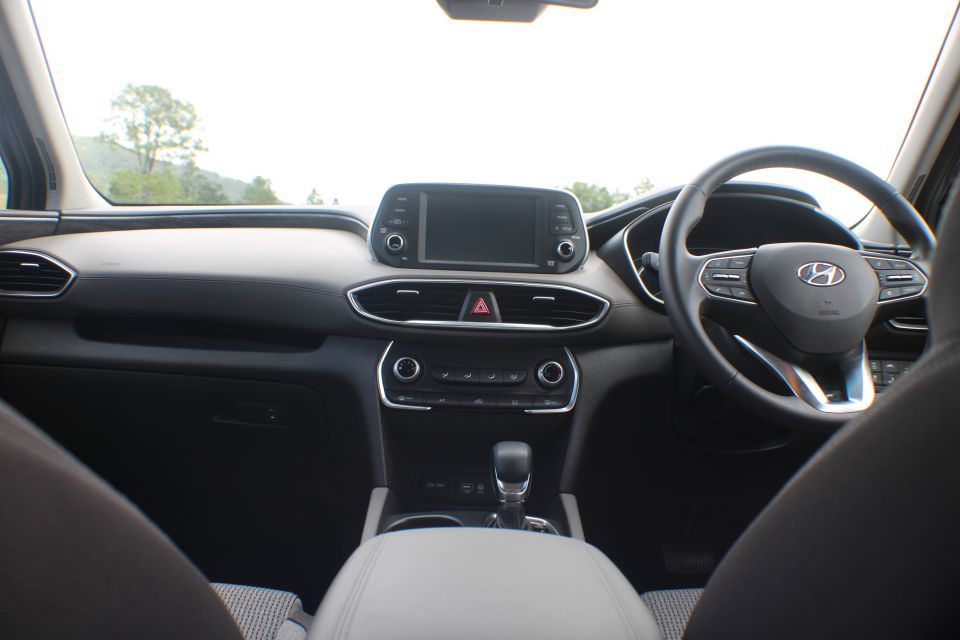

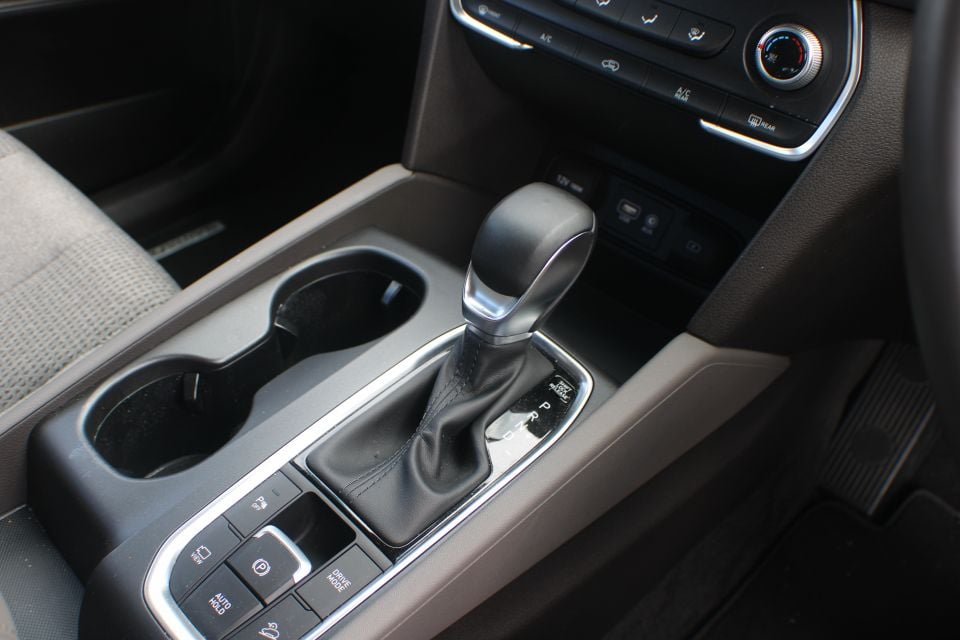
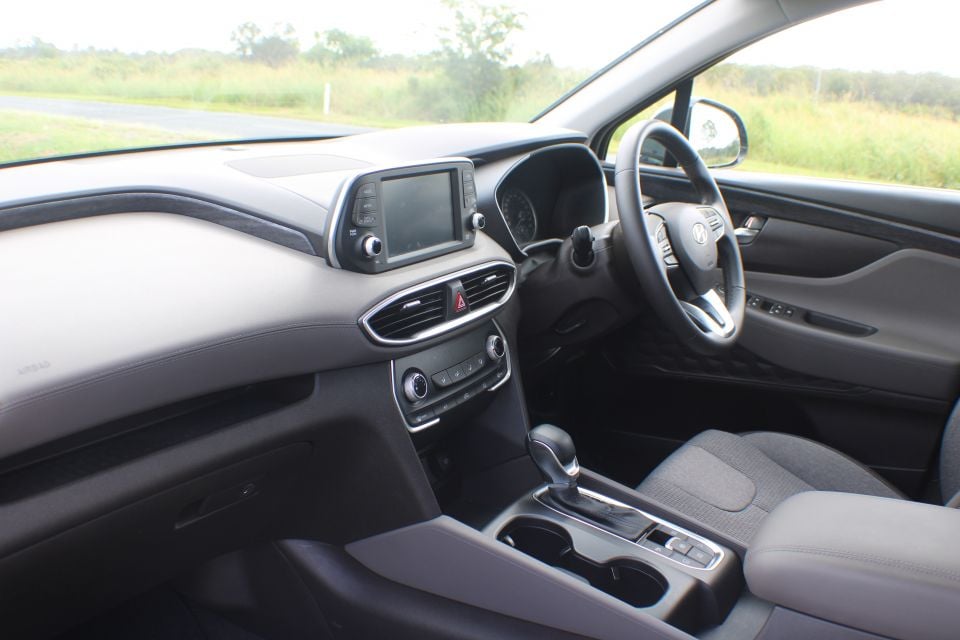
There are just two issues with the sweeping curves of the Santa Fe’s cabin.
Firstly, where the dash and the door meet on the passenger side of our tester, the trim didn’t quite line up. Secondly, the “Stone effect” material used on the curvature of the dash and doors in Active models with the grey interior looks like cheap Laminex.
Santa Fe Elite and Highlander models, as well as the Active with the black interior, use carbon fibre-effect trim instead. The Highlander also offers a burgundy interior with wood-effect accents.
These issues aside, the Santa Fe’s cabin is otherwise a class act.
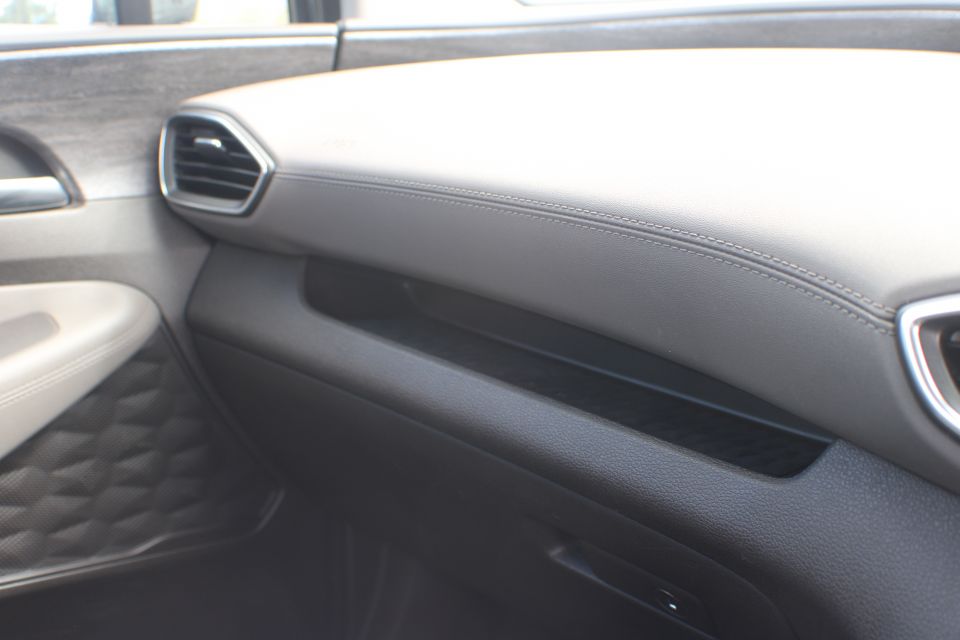
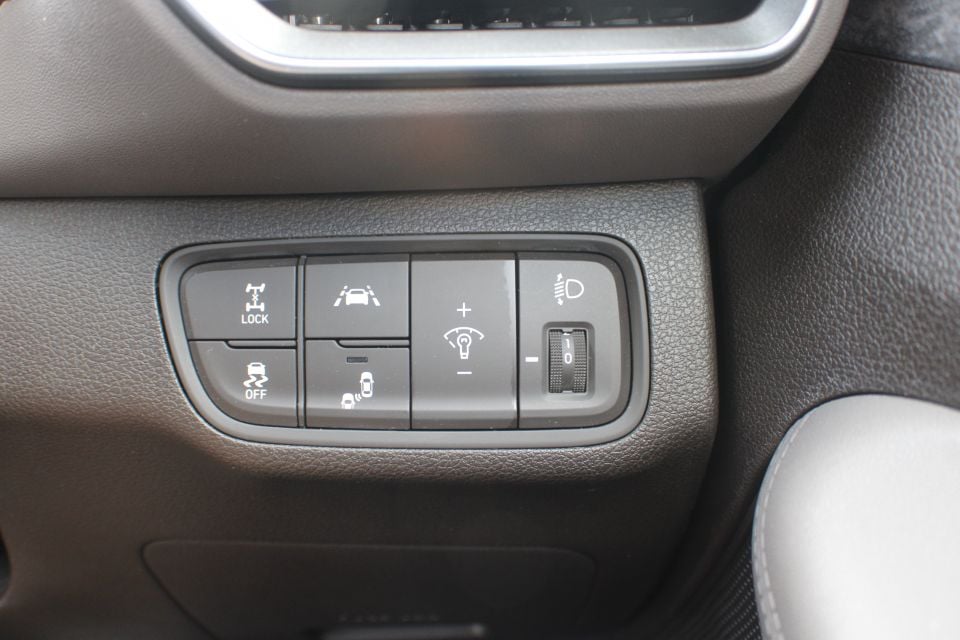
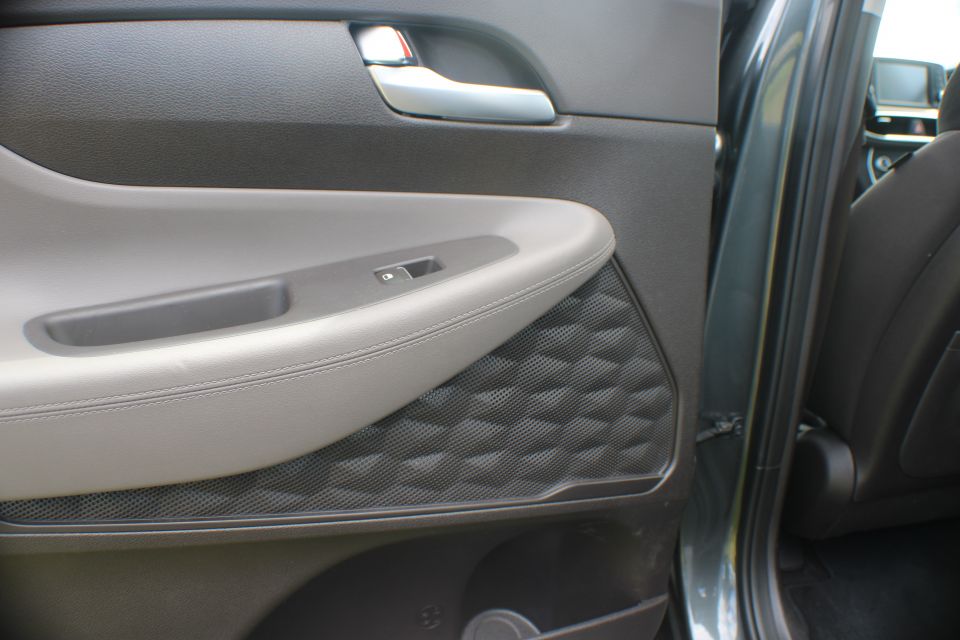

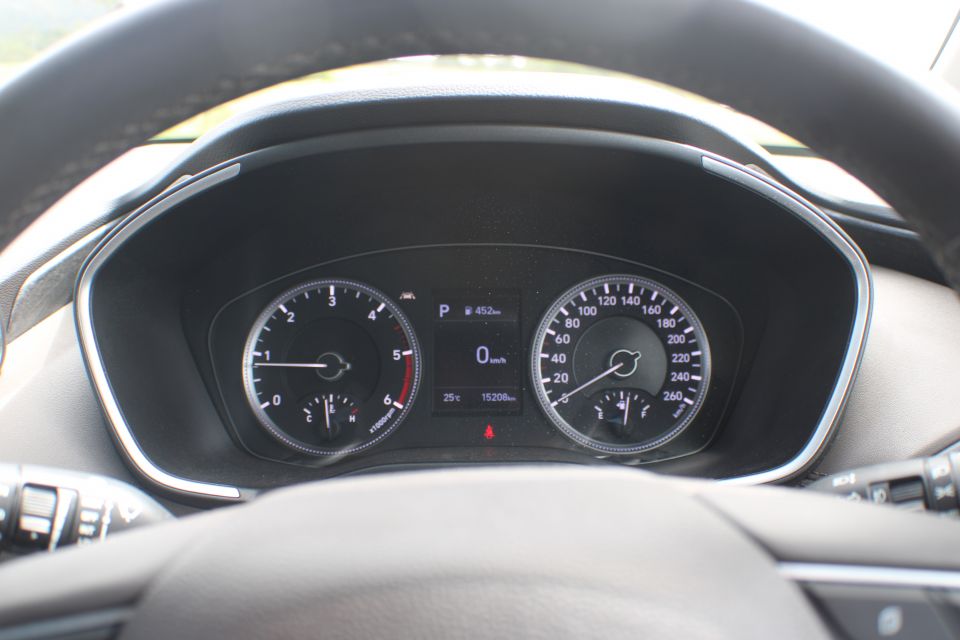
The top of the dashboard and the inserts of the doors are finished in a soft-touch material with stitching details.
The doors also feature interesting, textured material just below the arm rests. It’s hard to explain but it looks like quilted plastic. The Kia Seltos uses similar trim.
The passenger side of the dash also has a practical, rubberised shelf that can be used to keep a mobile phone.
Even in base Active trim, Hyundai’s employed a subtle, two-tone effect to the interior. The Sepia interior colour on this Santa Fe Active, as the name suggests, has a somewhat warm, brown tinge to it.
The cloth seats are terrifically plush and comfortable and look great.
If your children are still at the grubby stage of leaving half-eaten lollies in the car, you might want to step up to the mid-range Elite with its leather trim. However, at least in terms of seating surfaces, the base Active doesn’t feel like a poverty pack.
There are hard plastics to be found, such as on the lower half of the dashboard and doors.
Nevertheless, this interior is one of the nicest in the segment. It feels more premium than the outgoing Toyota Kluger and ahead of the Nissan Pathfinder.
Second row occupants enjoy good visibility and plenty of legroom and headroom. The seats also slide. Amenities include air vents, two USB outlets and a little phone shelf, all situated at the back of the front row’s centre console. They also have a “bottle” holder in each door. These are sized more like a can holder.

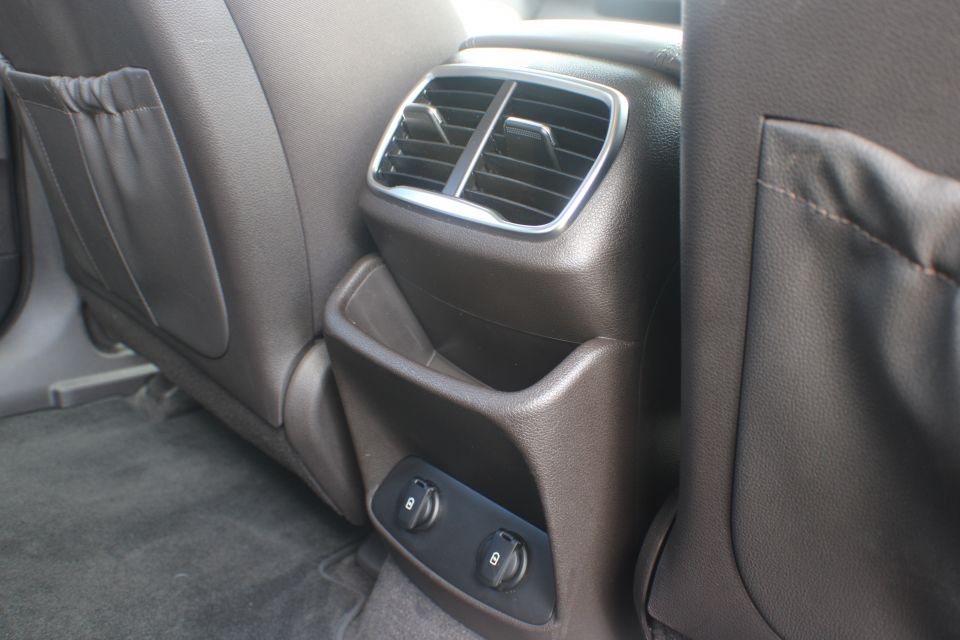
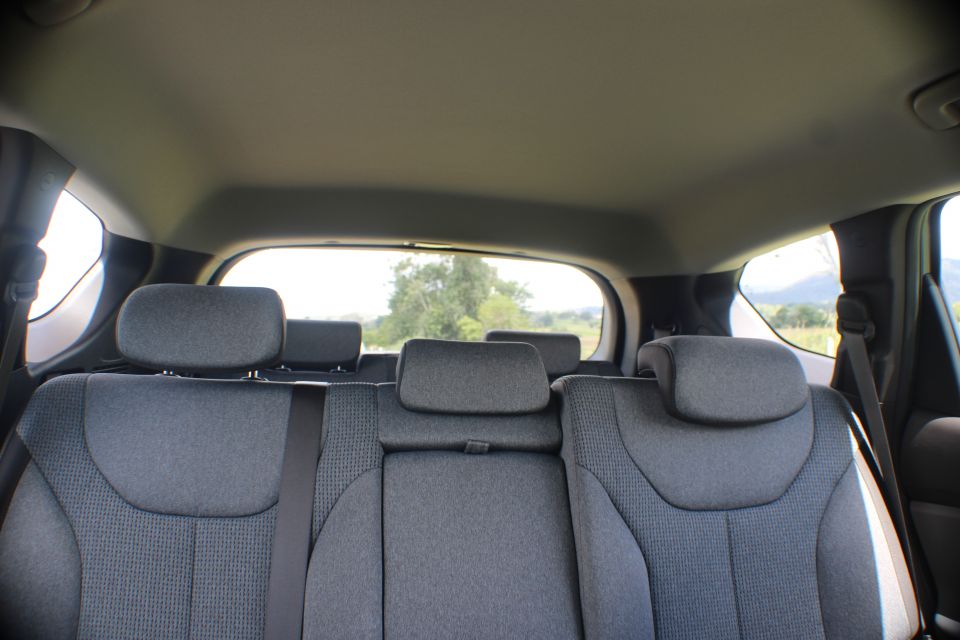
Child seats are supported by the fitment of three top-tether and two Isofix anchor points in the second row.
The third row is also spacious, although a bit cumbersome to get into. The upkick of the belt-line as it meets the D-pillar means visibility isn’t as good as in, say, the retired Holden Acadia.
There is, however, a decent amount of headroom back here and even sufficient legroom for adults. Three occupants 180cm tall could sit behind each other in each of the three rows and have sufficient legroom, though the third row occupant’s head might slightly brush the roof.
There’s just one thing that stops the third row from being ideal for long road trips and that’s the seat base.
It’s much, much thinner than that of the second row, likely to ensure a flat load floor, and it means long-distance comfort could be compromised.
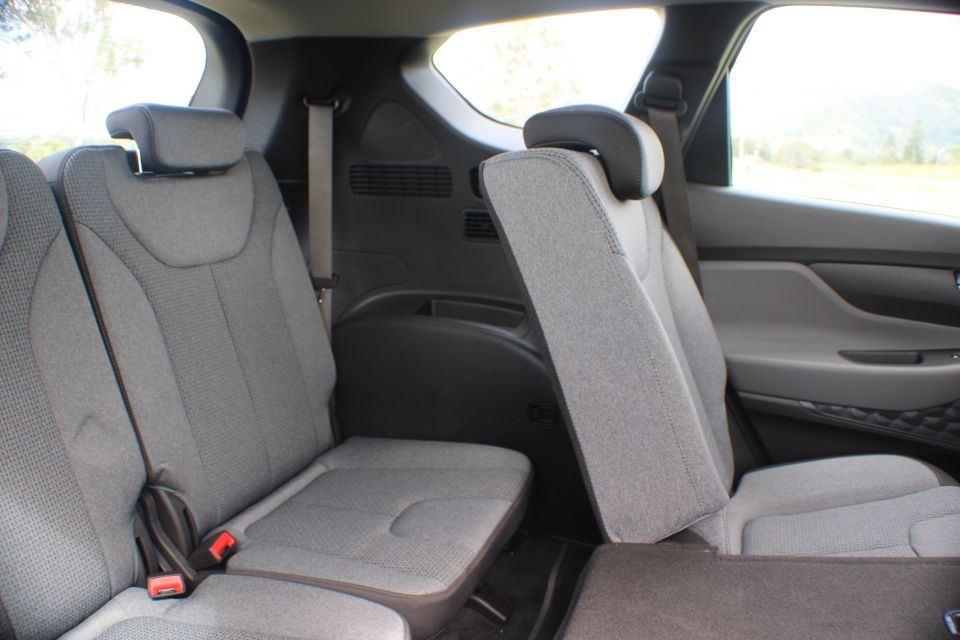


Third row occupants get two cupholders, fan speed controls and a 12V power outlet on the driver side and a kind of strange recess on the passenger side.
It’s not clear whether it’s supposed to be a bottle holder or just an open storage cubby, but a couple of cupholders would make more sense.
If you want a more capacious third row, you’ll have to wait for Hyundai’s jumbo-sized Palisade.
If you’re hauling cargo and not people in your Santa Fe, you can fold the second row with the press of a button. It lies almost completely flat.
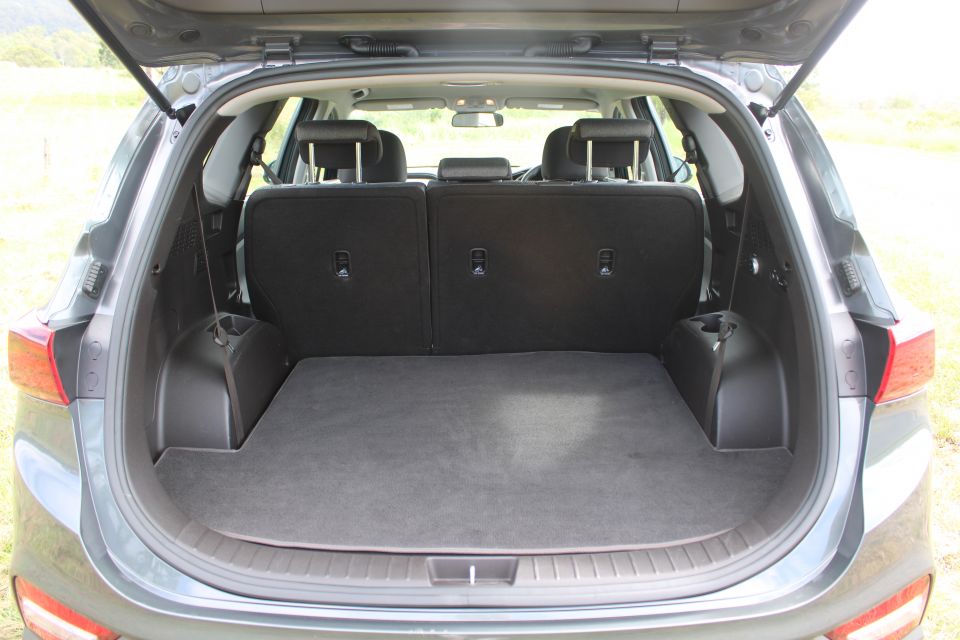

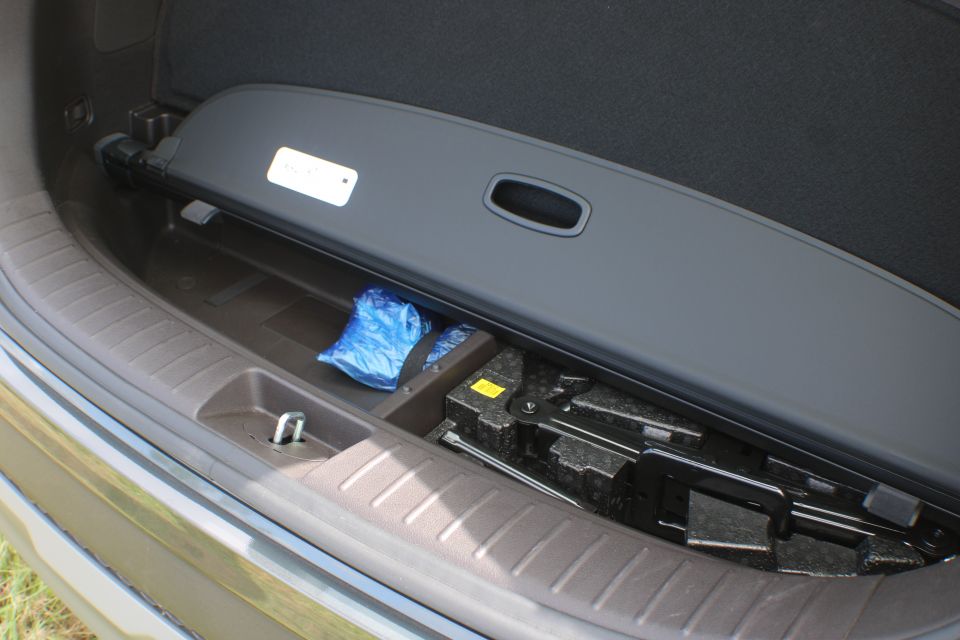
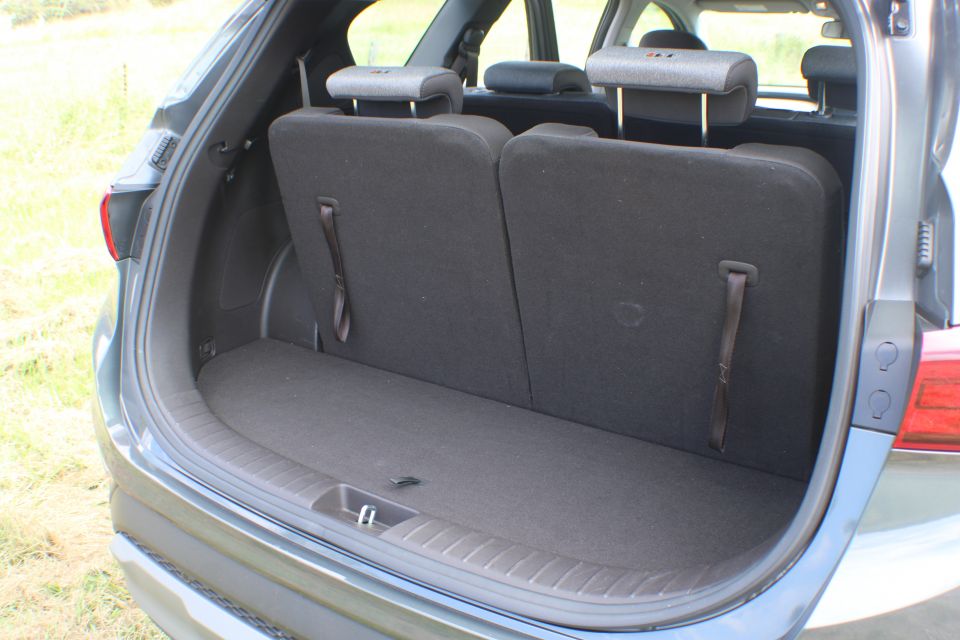
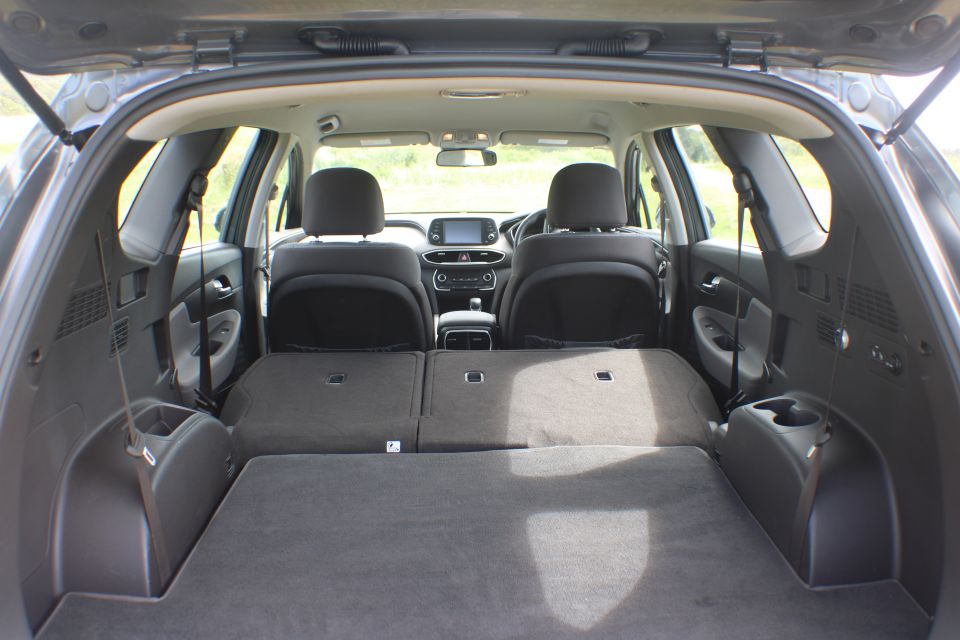
The third row will fold completely flat but you’ll just need to pull the straps to accomplish this.
With all seats up, cargo volume in the boot measures a paltry 130L, less than a Kluger or CX-9. You might be lucky to squeeze in two small suitcases if you stand them up.
With the third row folded, volume expands to 547L and then again to 1625L with the second row down.
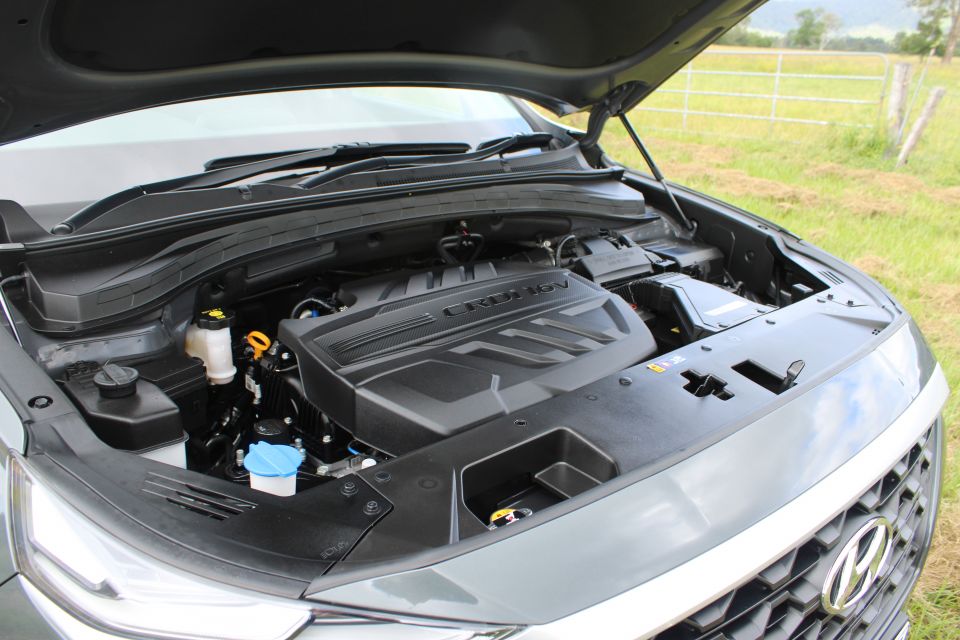

The Santa Fe Active uses a 2.2-litre turbo-diesel four-cylinder engine producing 147kW and 440Nm, mated to an eight-speed automatic transmission.
That’s down 59kW from the cheaper V6 model but up 69Nm.
Total towing capacity is 2000kg braked and 750kg unbraked. That’s identical to the petrol, front-wheel drive Santa Fe.
As a family wagon, the Santa Fe performs quite well on the road.
Engine noise can vary. At times, the Santa Fe is impressively hushed while idling. At others, there’s that typical diesel clatter, although it’s reasonably muted.
The Santa Fe sounds better on the run, with a subtle diesel soundtrack and low levels of wind and tyre noise.
Off the line, there’s some momentary lag, followed by a satisfying swell of mid-range grunt.
The Santa Fe may be a big car – 4770mm long and 1890mm wide – but it doesn’t feel it on the road.
It feels secure and composed to drive, with nicely weighted steering.
In fact, it lacks the ponderous, top-heavy feel of some SUVs and, instead, feels more like a big car to drive.
It can be hustled through sweeping corners with aplomb, though we’d stop short of calling it truly fun. You may nevertheless be surprised how enjoyable the Santa Fe can be up to around 8/10ths.
Hyundai’s HTRAC all-wheel drive system apportions up to 35 per cent of torque to the rear wheels in the default Comfort mode, increasing to up to 50 per cent in Sport mode.
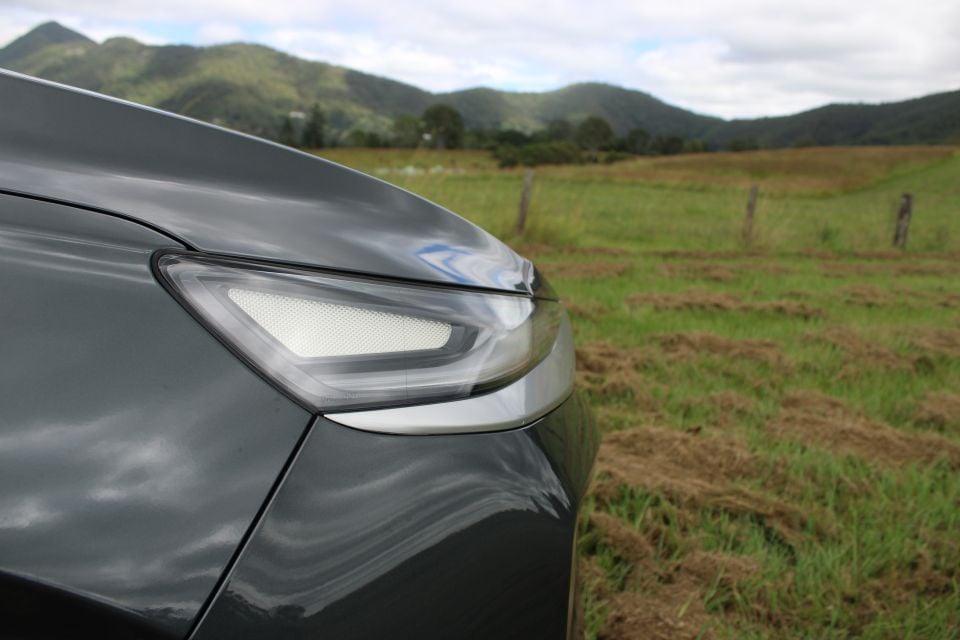
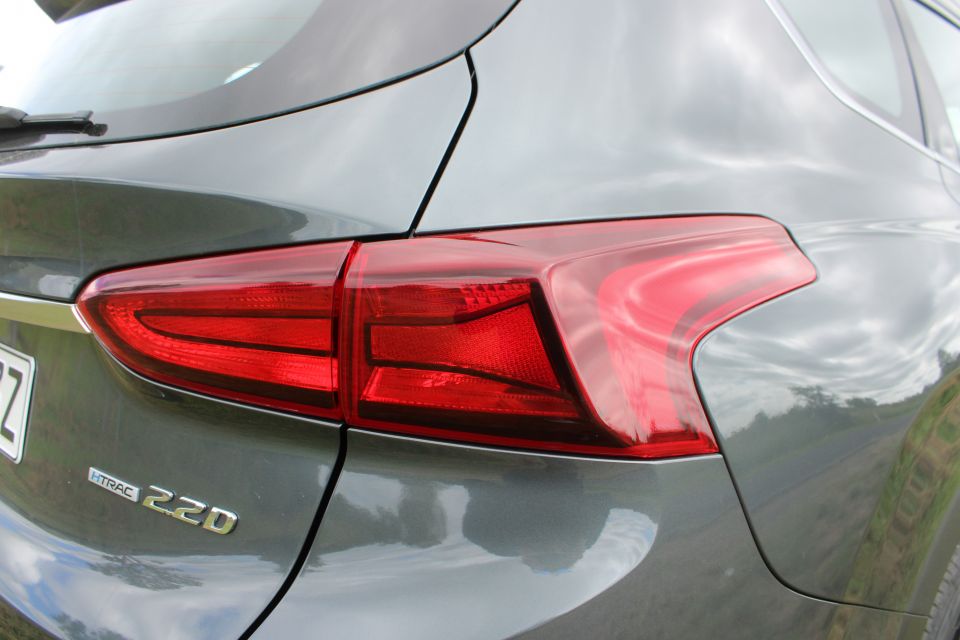

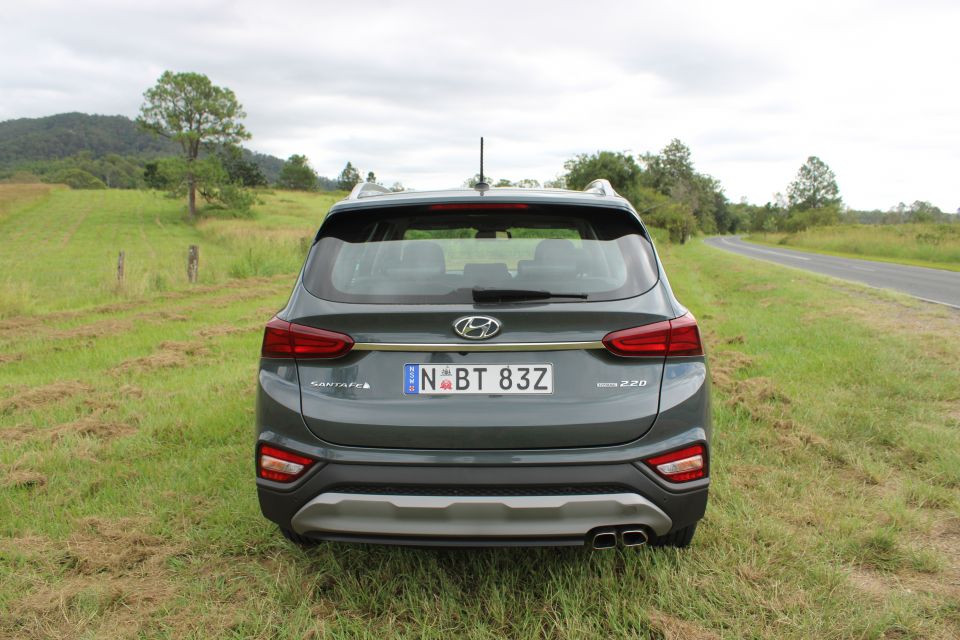
Though the Santa Fe isn’t an SUV you’d take far off road, its all-wheel drive system provides helpful traction in adverse weather conditions.
Ride quality is comfortable, though larger bumps and imperfections in the road can produce some slight lateral movement and shuddering in the structure.
For the most part, damping is superb and the Santa Fe is resolutely compliant.
The lane-keeping assist is far more assertive than many rival systems, or even those fitted to other Hyundais. It deftly keeps the Santa Fe in its lane and makes its presence keenly felt.
If you haven’t experienced a lane-keeping assist system before, you might find it almost aggressive.
The blind-spot monitoring system works well, though on one occasion – where the car was in one of two turning lanes – it was hyper-sensitive.
Perhaps the most frustrating part of the driving experience was a persistent rustling coming from the rear of the cabin.

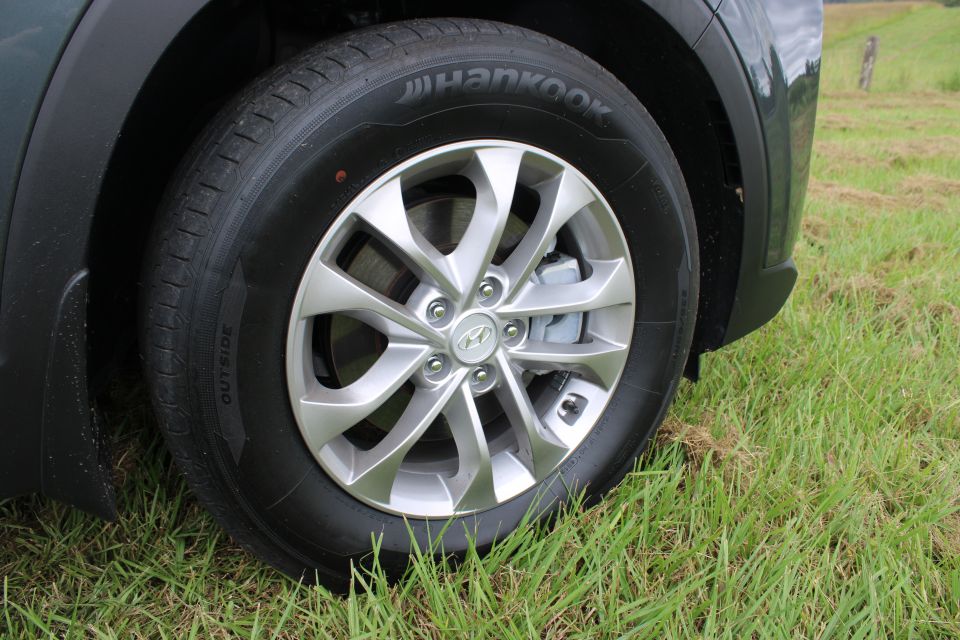
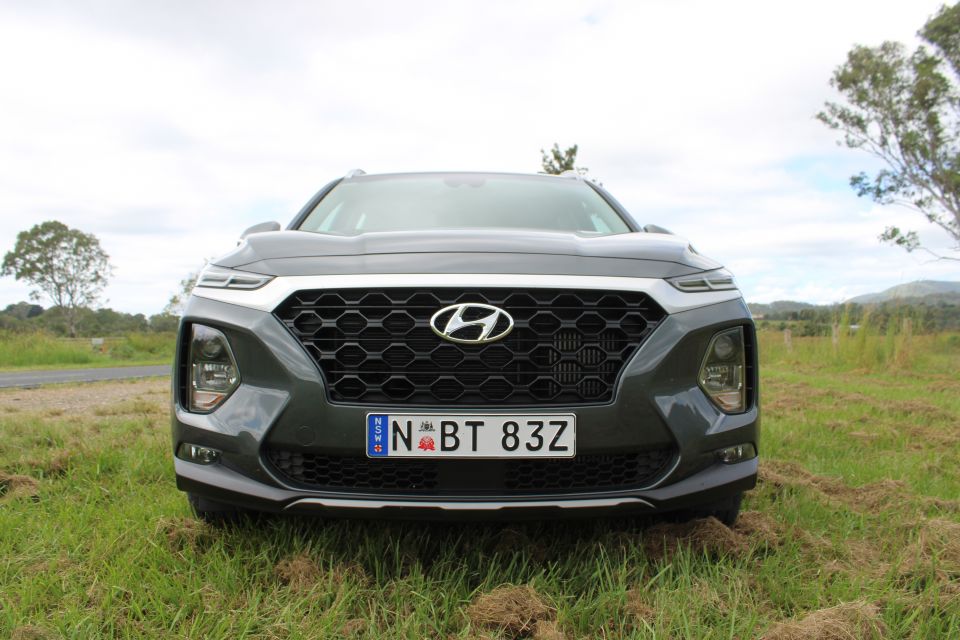
Buckling all the seat belts and stowing the cargo area cover did nothing to resolve this.
Thumbs down, too, for the Hyundai’s infotainment system. No, not the user interface – we really rate Hyundai systems’ usability – but the actual reliability of it.
Despite having a phone securely plugged in and stowed, Android Auto continually kept glitching or dropping out entirely. Sometimes, the screen would even go black. This hasn’t been an issue in any other Hyundai products we’ve tested lately, however.
In a mix of city and highway driving, the Santa Fe averaged 10.5L/100km. That’s a fair bit off from Hyundai’s claim of 7.5L/100km on the ADR combined city and highway cycle.
The Santa Fe requires servicing every 12 months or 15,000km, whichever comes first. Those are the same intervals as the V6 model.
In addition to a five-year, unlimited kilometre warranty, Hyundai also offers a Lifetime Service Plan with capped-price services.
The average cost of a service over a five-year period is $419, whereas you’ll pay an average of $342 per service for the V6.
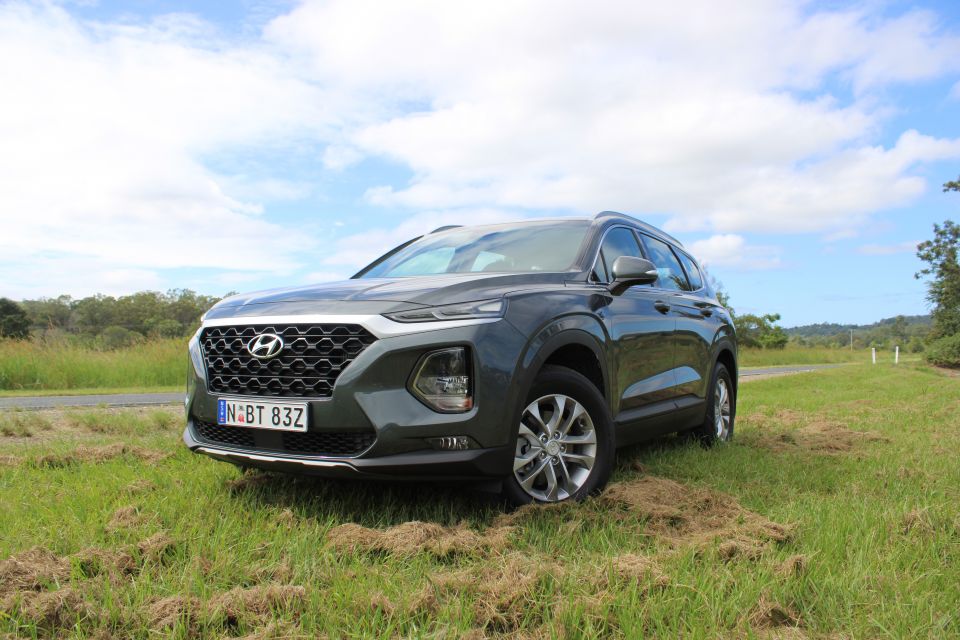
Where expert car reviews meet expert car buying – CarExpert gives you trusted advice, personalised service and real savings on your next new car.
The Hyundai Santa Fe offers a solid compromise for large SUV buyers.
There’s all-wheel drive, if not genuine off-road capability. It can tow, but not as much as ute-based rivals. Adults can fit in the third row, but they mightn’t want to stay there long.
If any of those three attributes are critical for you, the Santa Fe mightn’t be for you.
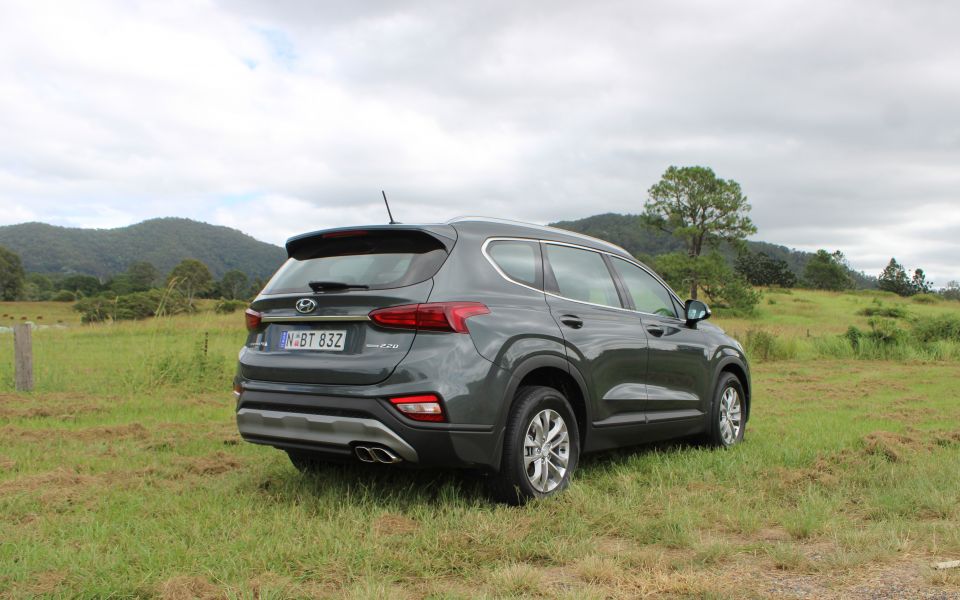
Yet for many large SUV buyers, however, the Santa Fe hits the sweet spot. The diesel is torque-rich and fairly refined, the Santa Fe drives well, and the cabin is stylish and spacious.
It’d be nice to see both a cheaper, front-wheel drive diesel option and an all-wheel drive V6, the latter of which is available in left-hand drive markets.
There’s a new Sorento on its way later this year but if you can’t wait, the Santa Fe is a compelling buy.
MORE: Hyundai Santa Fe news, reviews, comparisons and videos
Where expert car reviews meet expert car buying – CarExpert gives you trusted advice, personalised service and real savings on your next new car.
William Stopford is an automotive journalist with a passion for mainstream cars, automotive history and overseas auto markets.


William Stopford
15 Hours Ago


Matt Campbell
23 Hours Ago


William Stopford
2 Days Ago


CarExpert.com.au
5 Days Ago


Max Davies
6 Days Ago


Damion Smy
6 Days Ago